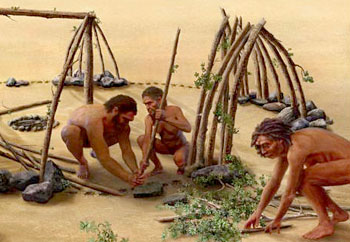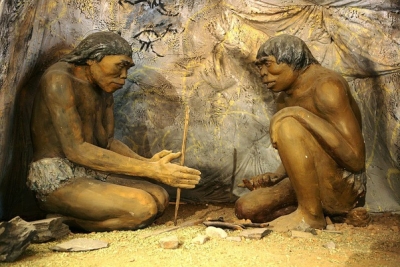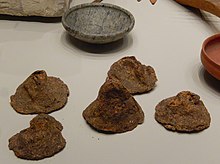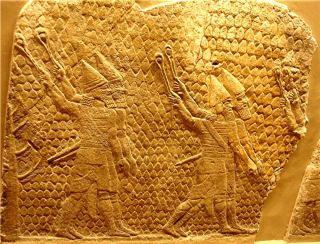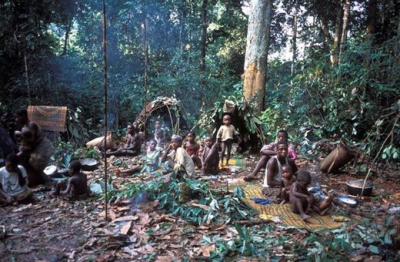
The Pygmies who live in the dense forests of equatorial Africa are the smallest people on earth. A fully grown Pygmy man never grows to more than about 1.35 metres. The forests provide their basic needs of food, water, firewood and clothing. Their huts are made by covering a beehive shaped frame with leaves. They live in a camp for about a month and then abandon it and move on.
Pygmies are a very tough people and they are more than a match for even large animals. They make the best jungle explorers, beaters and hunters of Africa and their profound knowledge of the ways of all the animals they hunt enables them to make very clever traps to catch them.
Around their villages and in the forest the Pygmies dig deep pits in the ground. They cover the pits with twigs and branches and then with a layer of green leaves. They next place some dead leaves, moss, trufs and even termite hills to make the spot look like solid ground.
Only the Pygmy can recognise these almost invisible traps: even a cunning animal like the leopard fails to see them. The big animals of the forest are often the victims of these traps. These include elephants, buffaloes and hippopotamuses which the Pygmies could not hope to catch by any other method. As soon as an animal falls into the trap the Pygmies rush up and kill it with their spears. The meat of the animal is shared out and eaten immediately.
Picture Credit : Google

